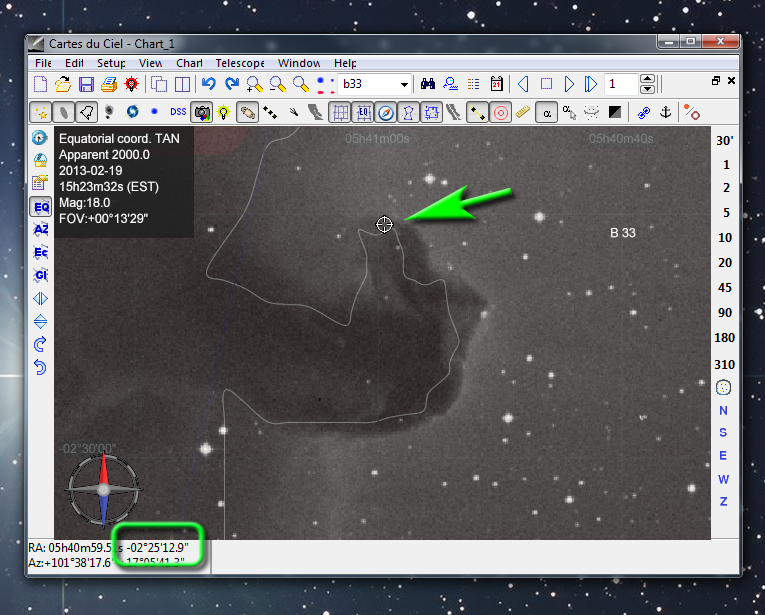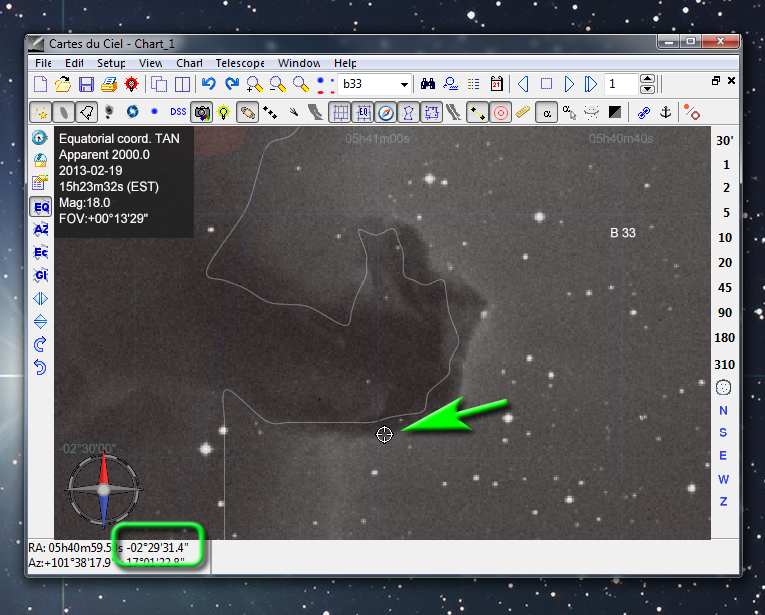Re: APOD: The Horsehead Nebula in Infrared... (2013 Apr 22)
Posted: Mon Apr 22, 2013 3:48 pm
Spectacular, but can we have some context? How "big" is it anyhow?
APOD and General Astronomy Discussion Forum
https://asterisk.apod.com/
The image combines data from two infrared sources mapped to blue and orange.epitalon wrote:Please can someone answer this question:
are they three channels of infrared seen in false colors,
or is it simply red channel replaced by infrared ?
Thanks
[b][i]Hubble Heritage: Fast Facts[/i][/b] wrote:
WFC3/IR F110W (YJ) (blue)
WFC3/IR F160W (H) (orange)
See also: Hubble Heritage: Original Images

. http://en.wikipedia.org/wiki/Commando_CodyBoomer12k wrote:
Oh, hey, I got promoted to Commander...GREAT!!!
:---[===] *
About 3 light years wide.lefthip wrote:
Spectacular, but can we have some context? How "big" is it anyhow?
Excerpted from my book, Star Vistas:Markus Schwarz wrote:Can someone tell me the size of the Horsehead Nebula?
Somehow I have come up with a different size than neufer.To give you a sense of scale, the size of the horse "head" itself from the tip of the "nose" to "mane" is about 1.5 light-years, which is about 1,000 times the diameter of the orbit of Pluto around our Sun. That's one big horse!
Same math but I used the Wikipedia size: 8 × 6 arcmins and assumed that "nose" to "mane" was the 8 arcmins.NoelC wrote:Markus Schwarz wrote:
Can someone tell me the size of the Horsehead Nebula?Somehow I have come up with a different size than neufer.Excerpted from my book, [i]Star Vistas[/i]: wrote:To give you a sense of scale, the size of the horse "head" itself from the tip of the "nose" to "mane" is about 1.5 light-years, which is about 1,000 times the diameter of the orbit of Pluto around our Sun. That's one big horse!
I measured it to be 4 arc-minutes from nose to mane. If we assume it's about 1.5 thousand light-years from Earth, and is 4/60ths of a degree across, this math seems to express the width: 1500 * tan(4/60), which evaluates to about 1.7, so my 1.5 was a bit on the low side. But it still seems closer to 1.5 than 3. Did I go wrong somewhere?
http://en.wikipedia.org/wiki/Horse wrote:
<<The height of horses is measured at the highest point of the withers, where the neck meets the back. This point is used because it is a stable point of the anatomy, unlike the head or neck, which move up and down in relation to the body of the horse.The English-speaking world measures the height of horses in hands and inches: one hand is equal to 4 inches. The height is expressed as the number of full hands, followed by a point, then the number of additional inches, and ending with the abbreviation "h" or "hh" (for "hands high"). Thus, a horse described as "15.2 h" is 15 hands plus 2 inches, for a total of 62 inches in height.>>
An astronomer friend of mine once let on that pretty much all measurements in the cosmos are quite inexact - essentially best guesses.neufer wrote:NoelC wrote:Markus Schwarz wrote: Same math but I used the Wikipedia size: 8 × 6 arcmins and assumed that "nose" to "mane" was the 8 arcmins.


NoelC wrote:I retrieved the Digitized Sky Survey image, which the chart program overlaid for me. Prior to this I had measured to the chart outline, which as you can see is a bit smaller than the extents of the actual nebula.neufer wrote:
Same math but I used the Wikipedia size: 8 × 6 arcmins and assumed that "nose" to "mane" was the 8 arcmins.
Subtracting the two declination measurements above, we get 4' 18.5" difference, or roughly 4.31'.
Since the horsehead is not far from the celestial equator (about 2.5 degrees),
I originally roughly equated the declination difference to the angular size of the object.
But not as big as some believe:NoelC wrote:
So let's say a "best" guess is 2ish light years, nose to mane, or about 1300ish times the diameter of the orbit of pluto. Looked at another way, if the horsehead were displayed in an image where it was 1300 pixels wide, mostly filling a monitor screen, the space our solar system occupies (to the orbit of Pluto, to which our fastest spacecraft take years to reach) would be 1 pixel.
That's one big horse!